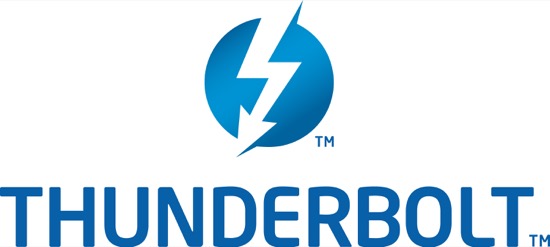More Thunderbolt Solutions For Audio At NAMM 2015 Exclude Windows Users

If anyone thought that Thunderbolt was a flash in the pan for audio technology solutions then NAMM 2015 announcements should put pay to that idea. Many of the new product and announcements at NAMM 2015 use Thunderbolt technology, which on the whole excludes Windows users. There are some Thunderbolt equipped Windows based PCs but most manufacturers are reticent to qualify their products for use with Windows machines.
We’ve spoken in great deal about this on several Pro Tools Expert podcasts, with Neil expressing his dissatisfaction with this situation but at the same time explaining some of the reasons why it’s not always easy to offer Thunderbolt solutions for Windows users. It’s not for want of trying with forward thinking brands like the Pro Tools PC offers dual Thunderbolt 2 as standard, so the technology is there and ready to work.
Some Windows users have taken the plunge using Thunderbolt with mixed results, there’s an excellent thread on the UAD forum showing this here.
Of course there is plenty of professional audio equipment on the market that uses fully Windows compatible technology, but with more and more manufacturers offering Thunderbolt only solutions it does leave Windows users with less choice.
So What Stops Windows Users Experiencing The Benefits Of Thunderbolt
There’s an excellent article here about the issues from AnandTech entitled Thunderbolt on PCs: A Crippled Experience :
The reason for the far from optimal experience with Thunderbolt on PCs boils down to two different aspects, the hardware and the software. In terms of hardware, Intel has never allowed motherboard vendors to hang the Thunderbolt silicon / add-in card off the CPU’s PCIe lanes. These have to hang off the platform controller hub (PCH). On the other hand, Apple was allowed to hook up the Thunderbolt silicon directly to the CPU. The reason behind this leads us to the software side of things.Apple has full control over the operating system. Hanging Thunderbolt peripherals directly off the CPU’s PCIe lanes requires extensive support from the operating system, particularly when it comes to hot plugging devices and/or waking up peripherals from sleep mode. Over the PCIe lanes off the PCH, Intel has more control via its chipset drivers. Ultimately, it looks like Microsoft dropped the ball and Intel decided to come up with a certification solution by only allowing Thunderbolt silicon to talk to the PCH for all PC boards.While Microsoft continues to twiddle its thumbs, Intel has decided to come up with less restrictive hardware suggestions to bridge the Thunderbolt experience gap between Macs and PCs.
Windows users can’t be ignored, as Neil also pointed out on the blog recently the idea that all audio professionals are using Macs is absurd, there’s a lot of Windows users being creative on Windows PCs. However some manufacturers do not seem to be concerned about the possibility of alienating Windows users by offering Thunderbolt only solutions.
So how can this be resolved? Is it a case of a single Thunderbolt standard for Windows? Is this ever going to happen?
Whatever the answer is, the current situation is not ideal for both manufacturers and Windows users.
One may wonder why a Mac lover would even bother caring enough to write this article. It’s simple, we spent many years having limited hardware, software and connectivity choices and it stinks. Let’s hope Windows users get to a Thunderbolt standard soon.